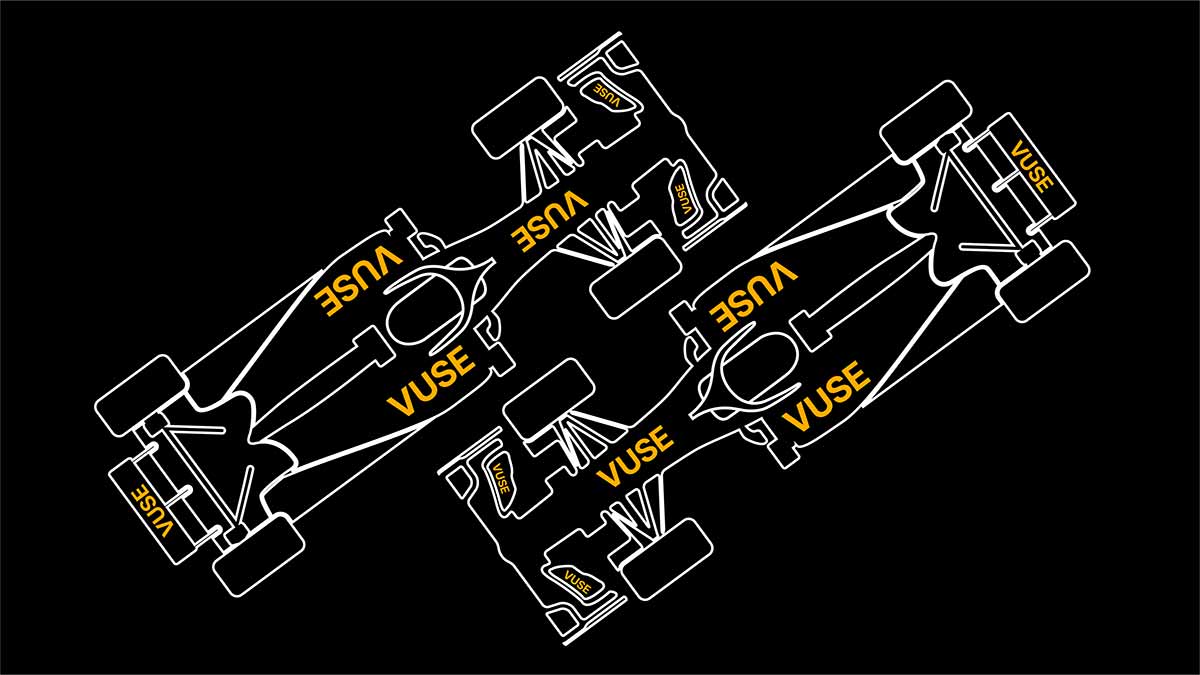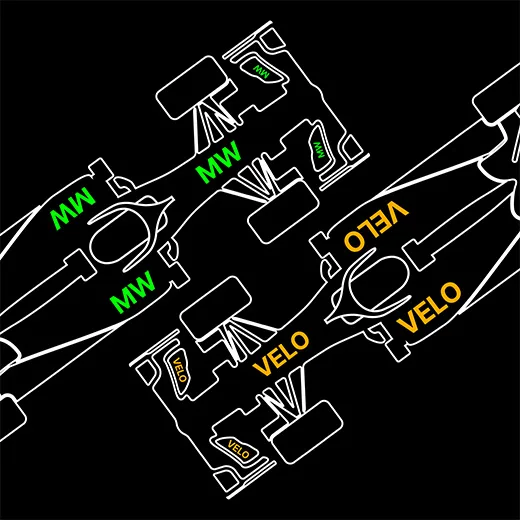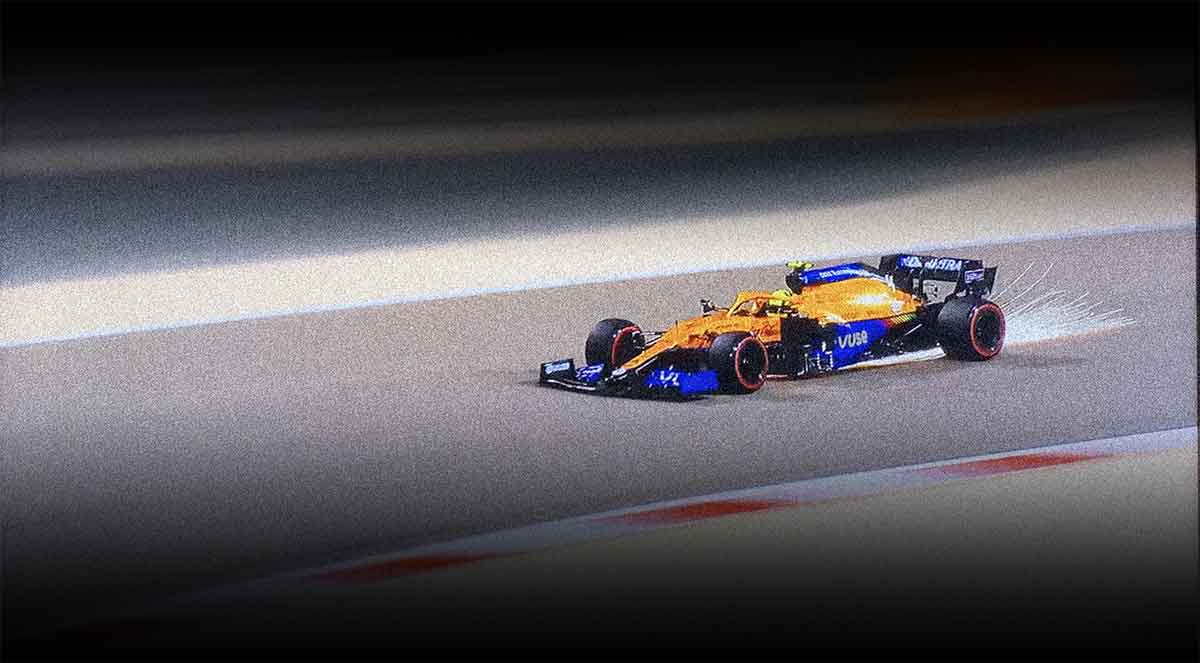- Resources
- News
-
-
Get Email Updates
Sign up for STOP's emails and never miss an update on our latest work and the tobacco industry's activity.
-
Get Funding
Ready to tackle industry interference? You could be eligible for a grant.
-
Share a Tip
Do you have information on tobacco industry misconduct in your country? Let us know.
-
Get Email Updates

In late March, 20 Formula One cars zoomed around the racetrack in Bahrain for the sport’s first Grand Prix of the 2022 season. The McLaren car, with its vibrant orange livery, stood out for one unfortunate reason: Large logos for the Vuse e-cigarette were prominent along its sides and front.
The government of Bahrain banned e-cigarettes in 2013 and also implemented a ban on tobacco advertising, promotion and sponsorship (TAPS)—so how could British American Tobacco (BAT), the McLaren team sponsor, advertise its addictive e-cigarette to the millions of F1 fans who tuned in to watch the Bahrain race? It may come down to a loophole that muddles the definition of what an e-cigarette actually is.
BAT’s history of advertising its products through F1
Tobacco industry sponsorship of F1 teams dates back to the late 1960s, when the Fédération Internationale de l’Automobile (FIA), the sport’s governing body, decided to permit sponsorship logos on cars. Tobacco companies jumped at the chance to advertise cigarettes to the sport’s fans, and did so aggressively. Imperial Tobacco, for example, replaced the Lotus team’s traditional British green livery with paintwork that resembled Gold Leaf cigarette packs. The FIA was shocked, reportedly expecting to see only a few discrete sponsorship logos for automotive partners—not tobacco brands. Yet the FIA did not step in to prevent it. BAT joined the fray in the early 1970s, and by 1996, all of the top six F1 teams sported tobacco brand logos.
But as more countries started to ban TAPS and as more sports were dropping tobacco sponsorship, the FIA recommended F1 end its tobacco sponsorship in 2006. BAT discontinued its F1 sponsorship, and overall industry sponsorship spending dropped. Then, in 2019, it rose sharply again as BAT rejoined as a major sponsor of the McLaren team. This time, however, it wouldn’t be plastering cigarette logos on cars, but advertisements for its newer nicotine products, including its Vuse and Vype e-cigarette brands (which have been consolidated under the Vuse brand), and nicotine pouches, Velo and Lyft.
BAT’s re-entry into F1, and its partnership with McLaren specifically, are notably aligned with the sport’s growth with young audiences. An estimated 36% of new F1 fans are under the age of 25. And as of 2021, McLaren had the youngest fan base of any F1 team, with around 38% of its fans in the 18 to 24-year-old demographic.
With that in mind, it’s easy to see the possible reason BAT re-upped its F1 sponsorship and with McLaren, specifically: Judging from BAT’s previous marketing efforts and other evidence, young people appear to be the industry’s target audience for its new addictive products. With a self-proclaimed global audience of 433 million unique viewers, advertising through F1 offers incredible exposure. It also provides a way to advertise to F1 fans in countries where promotion is banned. While BAT may remove its branding from McLaren cars in countries with TAPS bans, as it did in 2021 for the French, Portuguese, Austrian and Styrian races, international broadcasts from countries without TAPS bans allow any global viewer to be exposed to tobacco company advertising.
BAT’s sponsorship at the Bahrain Grand Prix
Even though Bahrain ratified the global health treaty, the World Health Organization Framework Convention on Tobacco Control (WHO FCTC) in 2007 and instituted a TAPS ban in 2009, BAT continues to promote its business and products in the country through F1. BAT advertised its Vype e-cigarette brand during the 2019 Bahrain Grand Prix, and brandished its Vuse e-cigarette logo on McLaren cars in 2021 and 2022.
The reason this may be happening despite a ban on e-cigarettes and TAPS? A puzzling recategorization of e-cigarettes in Bahrain—to the tobacco industry’s benefit.

BAT’s re-entry into F1, and its partnership with McLaren specifically, are notably aligned with the sport’s growth with young audiences.
In 2013, Bahrain banned the importation, distribution and sale of e-cigarettes. In 2016, a new Minister of Industry, Trade and Tourism effectively reversed the ban, directing Customs officials to allow “electronic hookah” into the country, as the 2013 decision only banned the import of e-cigarettes and didn’t say anything about “electronic hookahs.” People were understandably confused, and some questioned how an “electronic hookah” was any different from an e-cigarette. Since then, e-cigarettes have been sold in Bahrain under another name.
The ambiguity created by this loophole may be the reason BAT went ahead with advertising an e-cigarette at an F1 race in a country where e-cigarettes are banned. It appears that BAT benefited from the ambiguity around the categorization of e-cigarettes as “electronic hookahs” and “e-shisha”—another term that appeared around 2018 when Bahrain introduced an excise tax on nicotine-containing liquids used for “e-shisha.”
The Minister of Industry, Trade and Tourism has expressed other pro-industry arguments, as well. In 2018, he met with vape-shop owners who were angry about the new excise tax introduced by the Ministry of Finance on nicotine-liquid, and reportedly promised to communicate with the relevant ministries about the next steps, despite the decision being outside his ministry’s jurisdiction. In 2021, he supported a draft law that would allow tobacco agriculture and manufacturing in Bahrain. These pro-industry efforts signal that this loophole that potentially allows BAT to advertise addictive products in Bahrain may not close anytime soon.
The only way to protect F1 fans from tobacco industry sponsorship
BAT is benefitting from this loophole and exposing the people of Bahrain—and any F1 fan who tuned in to watch the Bahrain Grand Prix, including young viewers—to advertisements for its addictive products.
The FIA can stop this and protect its fans. Banning all tobacco sponsorship spending in F1 can effectively do that. STOP and 100 civil society organizations have demanded this action of the FIA, and will continue to do so.
Banning all tobacco company spending in the sport would help protect young F1 fans around the world and prevent the FIA from being seen as complicit in the industry’s attempt to addict a new generation to its products.



